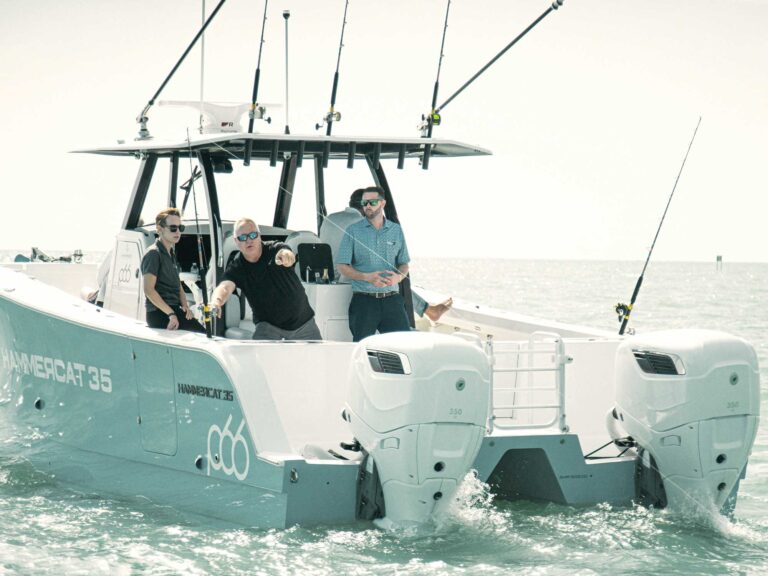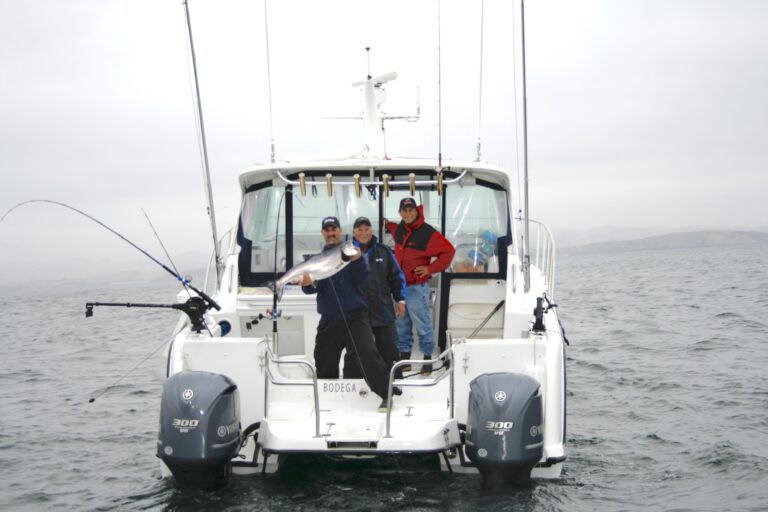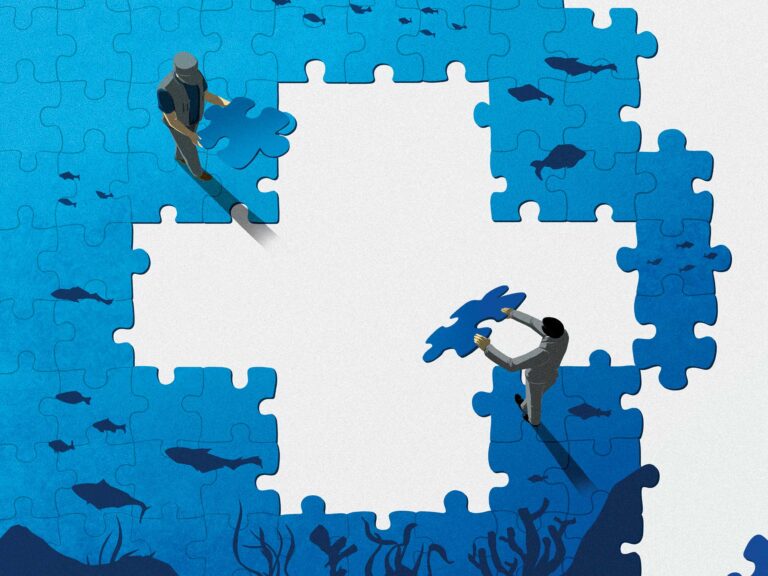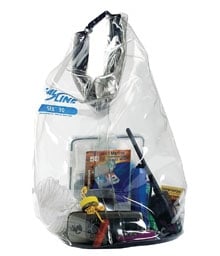
Flying Navy reconnaissance missions over the Mediterranean in the early 1980s, I never questioned my emergency gear. That’s because everything I needed was neatly packed in my inflatable survival vest, which I wore over my flight suit. Thankfully, despite more than 1,000 flight hours in 21/2 years -in less-than-friendly skies -I was never forced to parachute or ditch from my plane.
Fast forward ten years to civilian life. During my tenure as executive director of The Billfish Foundation, I agreed to go fishing with some casual acquaintances on their 23-footer off Pompano Beach, Florida. After catching bait, we ran offshore to set out kites for sailfish. The day showed plenty of promise as we jumped a sail right away, but the weather quickly deteriorated with squalls and building seas.
We started trolling toward shore, but a line fouled the propeller.
The owner turned off the outboard and tilted it up through the cutaway transom. As he and his buddy worked to unravel the line, the other angler and I stowed tackle. Without warning a large wave piled over the stern and into the cockpit. Per the owner’s instructions, the rest of us scampered to the bow while he tried unsuccessfully to restart the engine. Another wave poured in and, less than a minute later, the boat capsized. We were tossed into the water without life jackets, clinging to the overturned hull as conditions worsened. A half-hour later, cold and tired, we were all plucked safely from the water by another sportfishing boat. It was an eye-opening experience that I have no desire to repeat.
No matter how much fun fishing is, the sport is not without certain risks. Most are avoidable, but sometimes situations develop beyond control and quickly become dangerous predicaments. When that happens, crew coordination is paramount, and so is safety gear. In the unforeseen event you have to abandon your boat and enter the water, what would you take? Eliminate the guesswork by outfitting a ditch bag beforehand and keeping it where it can be retrieved at a moment’s notice. Here is what I recommend including in an emergency ditch bag to be kept on your boat.
- || |—| || |This bag of tricks comes in handy when things go awry. Photo: Carlos Alayo| A waterproof, heavy-duty plastic ditch bag is the ideal receptacle -compact, yet pliable to odd shapes. A clear bag makes it easy to identify the contents and their intent. Keep the bag in a central, accessible place on the boat, ideally with the personal flotation devices (PFDs). For center consoles and other mid-size boats, that might be inside the mesh PFD storage bag installed on the T-top. On larger sportfishing convertibles, the flying bridge helm is a good choice since that’s probably where the EPIRB is mounted and where you would be before sending the last mayday call. The EPIRB will help rescuers pinpoint your location, so a ditching crew should grab it on the way off the boat. No matter where the ditch bag and safety gear are stored, always show first-time guests the exact location before leaving the dock.
*
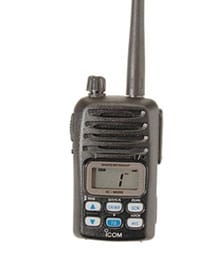
A handheld VHF radio is a must. Being able to communicate with potential rescuers in the area is invaluable. Choose a submersible, high-quality unit and keep the batteries fresh -change them regularly and include spares in sealed vacuum or sandwich bags in the main bag.
*
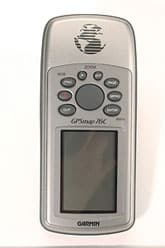
A handheld GPS is necessary to pinpoint your position and know the direction you’re moving, so don’t scrimp on quality. Waterproof integrity is critical, as is a lanyard, though some units do float. Change the batteries regularly and keep spares in the ditch bag.
- || |—| |
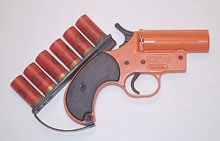
| |Photo: Joe Cermele| Keep a 12-gauge meteor flare gun in the ditch bag, in addition to the flares kept on the boat as required safety gear. Aerial flares are highly visible and effective. Shell-style flares are more water-resistant than handhelds, an important consideration for all gear that goes overboard.
*
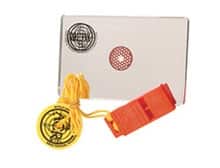
A signal mirror and distress streamer both can help rescuers find you more quickly. Signal-mirror reflections can be seen for miles in daylight or make searchlights more effective in darkness. Fluorescent distress streamers are long plastic tapes that unroll so searching aircraft can spot a person more easily in the water.
- A whistle can be heard over long distances without using as much energy as shouting. PFDs should also each have a whistle zip-tied to them.
*
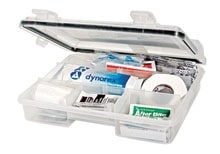
A first-aid kit in a compact waterproof container can keep minor injuries from becoming larger problems.
*

Chemical light sticks should also be zip-tied to PFDs, but carry extras in the ditch bag. Used for signaling and illumination, light sticks have a limited life span, so only activate them when needed.
*
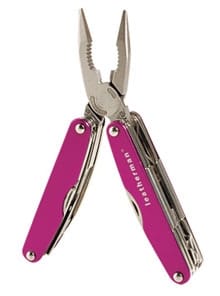
A multi-function tool can solve many problems. Worth having just for the pliers, these tools fold shut between uses to protect people and inflatables from sharp blades.
*
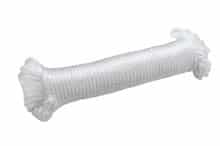
A 25-foot length of polypropylene rope can lash everyone together in their PFDs once in the water, so no one gets separated. Poly rope floats, and preferred colors are high-visibility white and yellow.
*
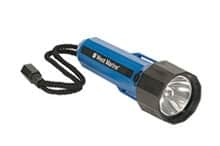
A waterproof flashlight works well for signaling at sea and should be equipped with a lanyard. Keep spare batteries in the ditch bag.
*
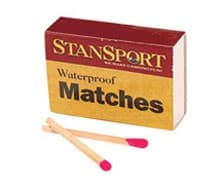
Waterproof matches will help you light signal fires and get warm on an uninhabited shoreline.
- Plastic bottles of water and energy bars should also be kept in the bag, but replace them often, as even sealed items can expire.
The ditch bag becomes less effective if its integrity is compromised. To be sure the ditch bag is complete, make it a rule never to borrow anything from it: Dedicate each item to the bag, and hope not one of them will ever be used.
No boater wants to go into the water in an emergency. But if the situation arises, a ditch bag, kept handy and loaded with essentials, could be the difference between tragedy and a happy ending.





